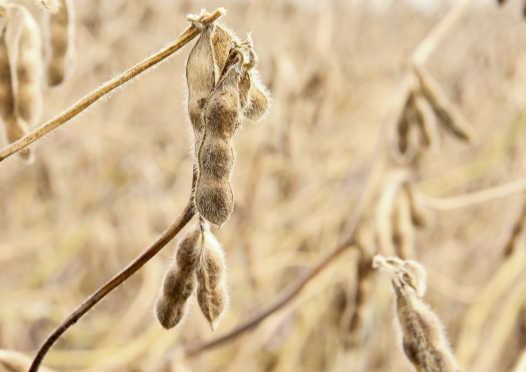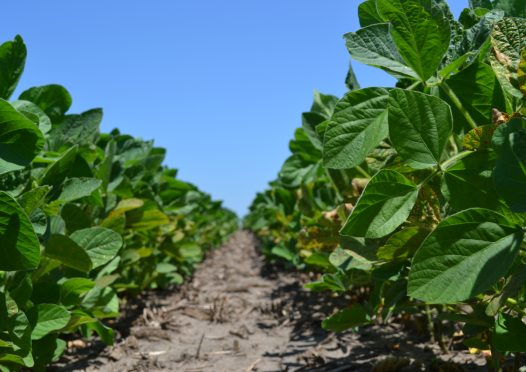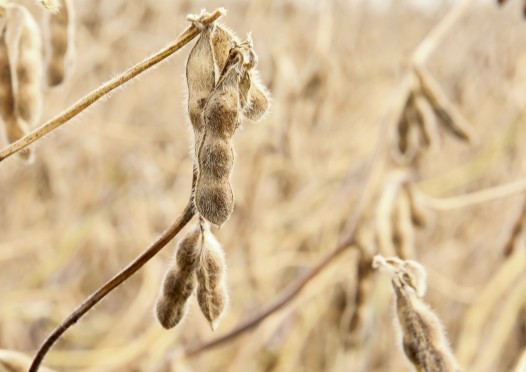ILSOYADVISOR POST
Agronomics: Soybeans – 214.7 Bushel Soybean Yield
So what is the upper end of soybean yield? We know farmers have broken 100 bushels per acre, and Kip Cullers produced 160 bushels. But we still haven’t seen the upper end, and soybeans can potentially produce hundreds of pods per plant. If every node on every branch produced multiple racemes and every raceme produced multiple flowers, a soybean plant can have a thousand potential pod sites.
Everyone is keen on producing high-yielding soybeans, and soybean yields in general are inching up. There are farmers figuring out how to produce 70- and 80-bushel beans consistently if the weather cooperates and they get timely rains in August, or if they can irrigate. The key is to practice good foundation agronomy and then begin to stack on technologies that not only protect yield (insecticides, fungicides and seed treatments) but add to yield (fertilizer, foliar feeding, growth regulators and stimulants).
It is always interesting to learn what other folks are doing to produce 80-, 90- or 100-bushel soybeans. Of course, yield contest winners aren’t the most forthcoming and don’t always publically share their secrets. But the fact that they can produce very high yields is interesting and gives us hope that perhaps there are practices the average producer can easily adopt.
We know that the officially verified soybean yield record was about 160 bushels produced by Cullers, weighed on a certified commercial scale and witnessed. Then last fall Stoller USA issued a press release that they broke 176 bushels in irrigated soybeans in south Texas, and recently they issued an email that they hit 214.7 bushels per acre, again under irrigation in south Texas. However, neither trial was “officially verified” by an independent third party like in a yield contest. Nevertheless, the fact that it wasn’t officially verified doesn’t mean it didn’t happen. The trial was conducted by a research scientist, and learning a bit about what they did is good food for thought.
Jerry Stoller, owner of Stoller USA and an Illinois native said, “The key is forcing more energy in the plant, storing it in the plant and using that energy to build more and bigger pods.” That is something all soybean agronomists and growers recognize—that soybean yield is essentially a function of pod count, and the more pods per plant the greater the yield. The key is getting the plants to keep more pods.
Stoller’s trial was located near Harlingen, in extreme southeast Texas near the Mexico border. The soybeans were planted on beds in twin rows. Beds were irrigated by drip tape. Albert Liptay, chief scientist at Stoller USA, said they planted soybeans at different populations from 105,000 to 275,000 seeds per acre. “A range of populations was grown to verify at what population the best yields occur. The best yields were at about 100,000 population, the normal used in our studies in the past. Yields at higher populations were much lower.”
Liptay added, “The cultivar was the open-pollinated Vernal, bred at University of Mississippi at the turn of the last century (about 1910). The cultivar is widely grown in the Rio Grande Valley as a first choice.” Soybeans were planted the third week of March and harvested at the end of July. Soybeans are generally rotated with multiple crops including sorghum, corn or cotton.
Stoller emphasized that one important step was spoon feeding N, P and K through the drip irrigation based on growth stage. They applied 610 lbs. of nitrogen, 40 lbs. of phosphate and 200 lbs. of potash, and adequate micronutrients were added at planting. According to Stoller, this fertilizer regime cost $350 per acre, and their check plot yielded 143 bushels per acre. If you consider a 45 bushel average Illinois yield, they produced 98 more bushels, and at $10 beans, that grosses $980 with a net gain of $630 per acre ($980 – $350).
Then on another plot, using the same fertilizer regime with drip irrigation, they applied a series of proprietary products under the Plant Power® brand that reached 214.7 bushels. Those included a seed treatment, an in-furrow starter application, application at V2, application with post herbicide, application at R1 and then at 10- to 14-day intervals through pod fill for a total of eight applications.
Again, the basic fertilizer cost was approximately $350 per acre. When the Plant Power products were added, there was an additional cost of $200 per acre and an additional gain of 72 bushels. At $10 per bushel that grosses an additional $720 per acre with a net gain of $520 per acre ($720 – $200).
For a total cost of $550 there was a gain of 170 bushels—and at $10 per bushel, a gross of $1,700 and net of $1,150 ($1,700 – $550).
Stoller said “The key was to keep the plant producing energy and transferring that energy to vital parts of the plant, including the roots and nodules. The nodules need carbohydrates to support the bacteria. However, the plants will not naturally ship enough energy to the nodules when it is producing flowers and pods. We have to force the plant to ship carbohydrates to bacteria in nodules.”
It is interesting to note that they applied only 610 lbs. of nitrogen through drip. However, a 214-bushel crop will require more than 1,000 lbs. of nitrogen with the rest coming from the soil or nitrogen fixation. Stoller pointed out that transferring more energy to the root and nodules let the soybeans continue to fix nitrogen throughout the growing season. “Our interpretation of these data clearly indicates that it is the supply of nitrogen to each plant that will determine the ultimate yield. If the nitrogen use efficiency from each plant could become greater and greater, the theoretical yield increase to 300 bushel per acre should be obtainable at higher plant populations.”
Note: ISA acknowledges that the yield in this trial was not verified by an independent third party. ISA doesn’t promote any company’s products over another. It shares this information only as a matter of record and showing what the potential of the soybean plant is and how little we still understand about what it takes to improve yield.
Agronomist Dr. Daniel Davidson posts blogs on agronomy-related topics. Feel free to contact him at djdavidson@agrwrite.com





Comments
Add new comment